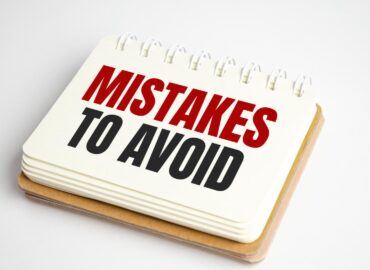Critical Role Gaps: How to Identify and Bridge Them in Your Organization
Imagine driving a car at full speed, only to discover that your brakes are missing. This alarming scenario might be more relatable to your organization than you think. Critical role gaps in your company can be just as dangerous—undermining your operations, stalling growth, and putting you at risk. But unlike the missing brakes, these gaps aren’t always visible. They lurk in the background, gradually eroding your business potential.
Now, picture the relief of knowing you’ve found these gaps and closed them before they could do any real damage. That’s what this blog is about: identifying and bridging critical role gaps to ensure your organization doesn’t just survive, but thrives.
What Are Critical Role Gaps?
Critical role gaps occur when key positions in your organization are either unfilled or inadequately filled. These roles are often essential to the operation, strategy, and future success of your company. When left unaddressed, these gaps can lead to increased workloads, decreased morale, and even the failure of critical projects. Simply put, they are the missing pieces in your organizational puzzle that prevent your business from running smoothly.
A 2023 survey by Deloitte found that 74% of companies with unfilled critical roles reported a significant negative impact on their financial performance . This statistic highlights the importance of proactively addressing these gaps before they become insurmountable obstacles.
Skill Mapping Cheat Sheet: A 5-Step Masterclass for CHROs and HRs
Identifying Critical Role Gaps in Your Organization
The first step in addressing critical role gaps is identifying them. But how do you spot something that isn’t there? Here’s a roadmap to help you identify these gaps:
- Audit Your Organizational Structure: Begin with a comprehensive review of your company’s current roles and responsibilities. Look for areas where tasks are falling through the cracks or where key functions lack ownership.
- Employee Feedback: Your team is on the front lines and can often identify gaps that might not be visible to upper management. Regular surveys and open communication channels can help you gather this crucial feedback.
- Analyze Business Outcomes: If certain departments are consistently underperforming, it could be due to a critical role gap. Look at your business outcomes and work backward to identify where the problem might be originating.
- Talent Readiness Index: Tools like PeopleBlox’s Talent Readiness Index can help you assess whether your current workforce is prepared to step into critical roles as needed. This proactive approach allows you to anticipate gaps before they occur.
The Impact of Ignoring Critical Role Gaps
You might be wondering, “What’s the worst that could happen if we leave these gaps unaddressed?” The answer: a lot.
- Decreased Productivity: When critical roles are unfilled, other employees often have to pick up the slack. This can lead to burnout, reduced productivity, and an overall decrease in morale.
- Stunted Growth: Critical roles are often tied to strategic initiatives. Without the right people in these positions, your organization may struggle to innovate or expand.
- Financial Losses: As mentioned earlier, the absence of key personnel can directly impact your bottom line. The longer these gaps go unaddressed, the more costly they become.
- Talent Drain: Overworked employees in adjacent roles may leave, exacerbating the problem and creating a cycle of turnover that’s hard to break.
Breaking Down Skills, Jobs and Roles: A Human-Centric Approach to Role Deconstruction
Bridging the Critical Role Gaps: A Strategic Approach
So, how do you close these gaps and ensure your organization is on the path to success? Here’s a strategic approach:
- Succession Planning: Implement a robust succession plan that ensures there’s always a pipeline of talent ready to step into critical roles. This involves identifying high-potential employees and investing in their development.
- Role Redefinition: Sometimes, the problem isn’t the lack of a person in a role, but the role itself. Redefining roles to better align with current business needs can help you bridge gaps more effectively.
- Cross-Training: Encourage cross-training among employees so that more than one person is capable of performing critical tasks. This not only reduces the impact of gaps but also increases overall organizational agility.
- Leverage Technology: Use technology to automate routine tasks, allowing your critical employees to focus on more strategic work. Tools like PeopleBlox can help in identifying gaps and offering solutions through analytics and automation.
- External Recruitment: When internal solutions aren’t enough, it’s time to look outside your organization. However, this isn’t just about filling a vacancy; it’s about finding the right fit for a role that’s pivotal to your company’s success.
The Role of Leadership in Addressing Critical Role Gaps
Leadership plays a crucial role in identifying and addressing critical role gaps. As a leader, it’s your responsibility to ensure that these gaps are not only identified but also filled in a way that aligns with your company’s long-term goals.
- Communicate the Vision: Make sure your team understands the importance of filling these gaps and how it ties into the company’s overall vision.
- Foster a Culture of Growth: Encourage continuous learning and development within your organization. This will ensure that employees are always ready to step into critical roles as needed.
- Be Proactive, Not Reactive: The best leaders anticipate problems before they arise. By regularly reviewing your organizational structure and the readiness of your talent, you can address critical role gaps before they become critical issues.
Conclusion: Turning Gaps into Opportunities
Critical role gaps don’t have to be a roadblock. With the right strategies and tools in place, you can turn these gaps into opportunities for growth and innovation. By being proactive, leveraging technology, and investing in your talent, you can ensure that your organization is not just filling these gaps but is also positioning itself for long-term success.
So, take a moment to audit your organization today. Identify those critical role gaps and take the necessary steps to bridge them with PeopleBlox. Your future success depends on it.



